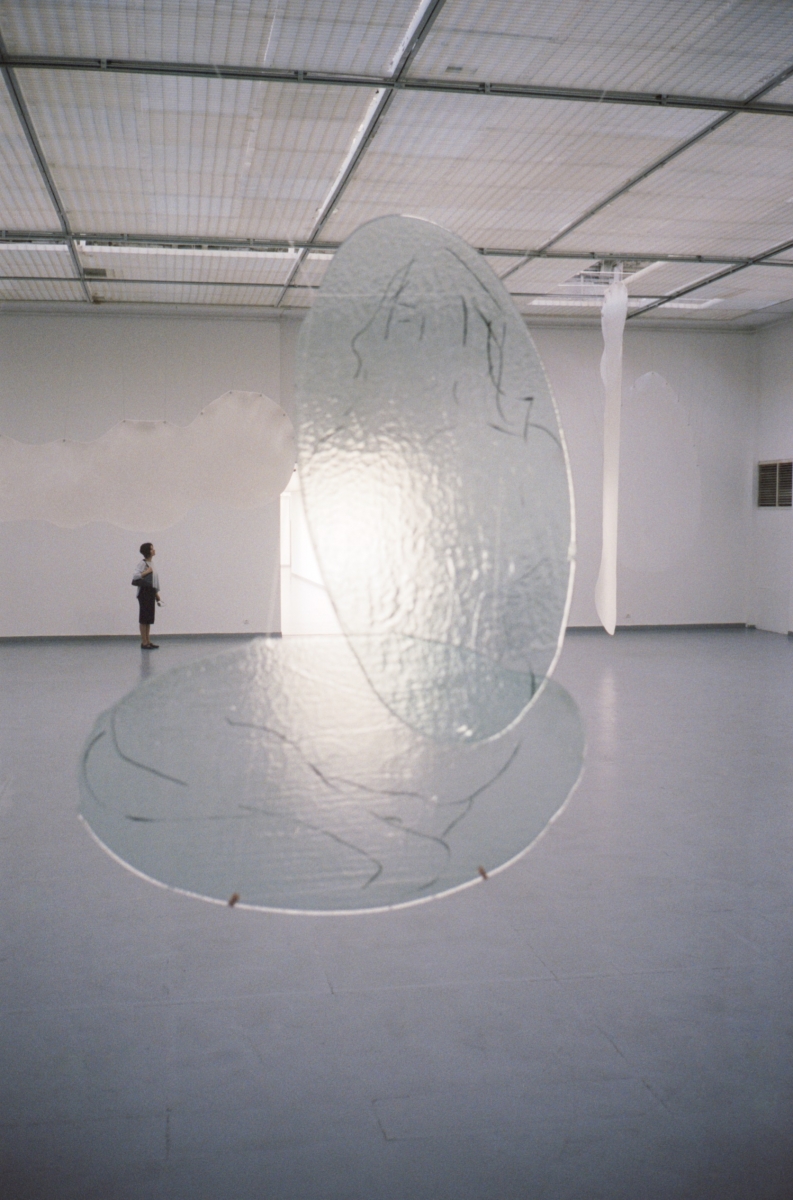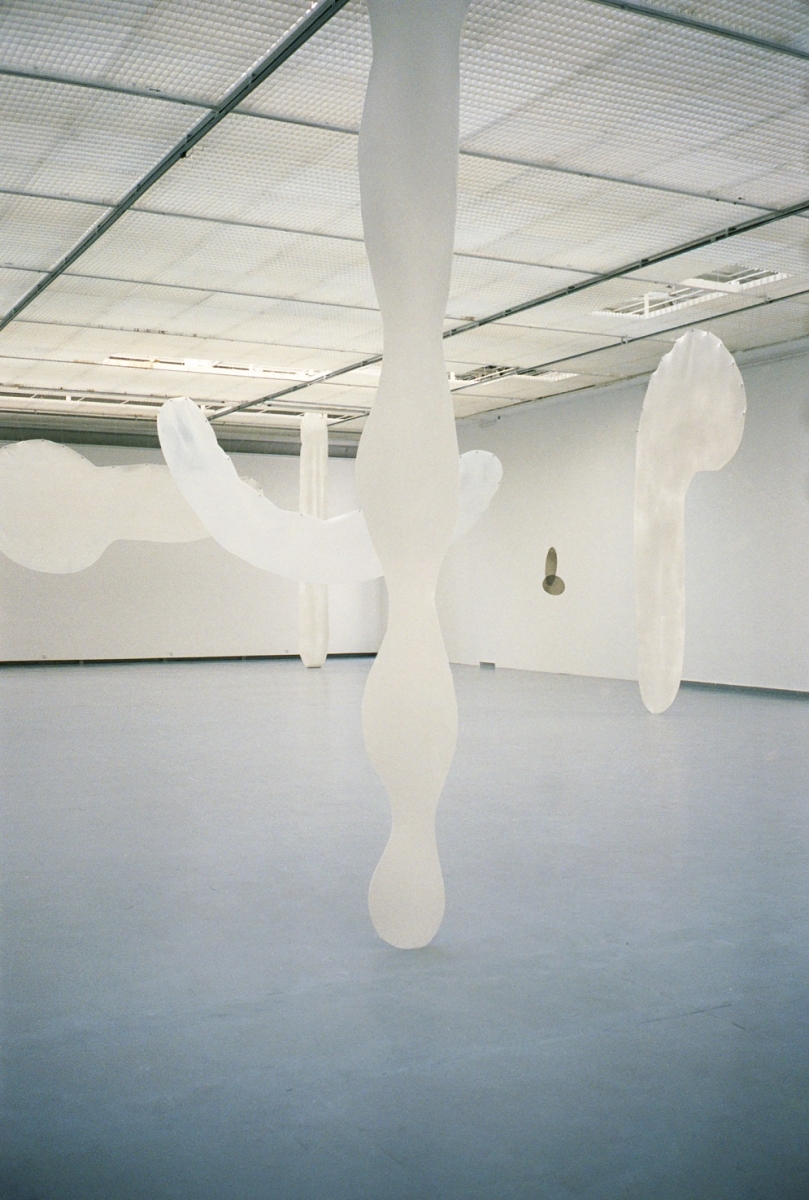We like to see things in motion, going in one direction or another: expanding or condensing, improving or reducing, progressing or deteriorating, unfolding or folding. And sometimes it comes as a surprise to realise that worries that we locate and localise in our time are not necessarily specific to our time. Take insincerity. In the arts, it is something that has been called out for ages, from the Romantics to the Impressionists to the Surrealists and Dadaists to the Abstract Expressionists to Fluxus and beyond. One could argue that these problematics never really change, but the contexts and the conditions under which artists tackle them do.
Over the last seven or eight years, the shift to image-based social media has altered the dissemination of visual content; or more specifically, the mode of engagement with it and the conditions for its visibility and potential success, among other things. Coincidentally or not, the art market has shifted from neo and post-conceptual art practices to material-based ones. Although notions such as the New Materialism speak about the livelihood of things, the dissolution of form and content, of the tactility and physicality at the heart of it, this shift has also favoured a generally pictorial ‘what you see is what you get’ approach. More and more illustrative art practices, emphasising the importance of the theme itself, but not how the specific work of art deals with it, have been revered and lauded in the last few years. And so the current operational mode in the international art world can be alienating from the point of view of an artist who does not subscribe to this way of working; and even more so, from the perspective of the general public, which is typically more interested in the meaning-making or effect-producing powers of art, rather than the symbolic or economic value of it, and rightly so.
The artist Marija Olšauskaitė tells her collaborator Jonas Žakaitis that she has broken away from exhibitions for a while. She says she simply wants to do something sincere. Materially, ‘Witness on our Behalf’ speaks for itself. On entering the CAC’s main exhibition hall, one immediately encounters large-scale untitled sculptural objects, hanging gently from the ceiling. They linger between childlike blobs, clouds and something with a more sexual character, a flaccid penis, or a used condom. The varying opacity of hand brushstrokes, and the alluring undefinable thickness, alludes to a more poignant note. Objects meet the visitor as if they are memories, traces of tactile gestures, whether they be child’s drawings, white glue adhesive experiments, or sex paraphernalia. The hanging sculptures also play with the eye, resisting singular definition through illustration or representation. However, they indicate that they have nothing to hide or obfuscate, and in doing so, the sculptures enchant us with their clarity. These works are incredibly distinct, by virtue of the subtle variation of translucence and form. None are entirely childlike or sexually explicit, hanging together like sieves for memories of different intensities and moments, crystallised in this fragile and temporary exterior. The mattress devised as part of the exhibition, a soft pillow to lie on, is set up as a communal space to observe guest artist appearances (performances, DJ sets, screenings), and thus becomes a welcoming vantage point from which to gaze at the elegance and lightness of it all. And yet, the smaller coloured stained-glass hanging ovals lack such individual character, and become replicas of each other. On them is a silhouette of a semi-abstract nude, inscribed in felt-tip pen. They stand out almost like reproductions of each other, and counter the sincere gestural logic of the exhibition. The reclining nude appears to be the same throughout, even if hand-painted on slightly different surfaces. It is a reminder of the vastness of the CAC’s main hall, and the immense challenge of assembling a tenderly evocative, intimate show in a space such as this.
Underneath the materiality of the show, ‘Witness on our Behalf’ attempts to build a space for belonging, honesty and openness. Semantically, being honest implies being direct, saying something not only truthfully, but loudly too. We tend to see honesty as a virtue in itself, we generally put a favourable slant on it. Honesty often works as a pre-condition for building or maintaining friendships. And yet, we don’t like to hear words said sincerely. If they are justifiably or unjustifiably critical of us, suddenly honesty can become something we have had enough of for a while. Here, we encounter one of the central issues in the show. The attempt to build kinships, to transcend the confines of the suffocating contemporary art space, is indisputably admirable and worthwhile. However, it falls short of succeeding. In the essay ‘The Unconditional Experience of Space’, the sociologist and art historian Pelin Tan argues that critical spatial practices demand ‘new ethics’. She asks if an actual territory can be a space of radical experience, open to or welcoming anything (including an enemy)? In turn, she refers to Jacques Derrida’s notion of radical hospitality, ‘wherein the condition of meeting, facing, and opening one’s self to a stranger does not have any prevention or any precondition that defines the unexpected encounter, which is unconditionally open’, before concluding that the new ethics should be based on spatial experience and communality.
So the ethical objective to reach out and form trusting bonds inevitably goes beyond the exhibition walls. However, the difficulty lies in the fact that the CAC (along with many other contemporary art spaces) is loaded with unspoken conditions and expectations from the visitor. To produce a space, or at least a series of situations of social openness, then comes down to the artist’s own action, with institutional support (given initially, or demanded and claimed, if not). Otherwise, ‘Witness on our Behalf’ risks replicating the structures of art world elitism and tribalism that it desires to dismantle, or at least suspend in this intimate, open space, queering it with one hand and conditioning it with the other. If the show only becomes a safe space for one’s own group of friends and those who are already prepared for the socio-cultural conditions and etiquette expectations of a contemporary art space, it misses the mark in the sense of communion between those marginalised. It becomes a mechanism foregrounding the divide between those on whose behalf it is speaking and the outsiders. Even if both stand for the same thing.
This should partly be put on the CAC’s shoulders as well. The institution is undoubtedly vitally important both to the history of contemporary art in Lithuania, and its social fabric as it is today. It carved up a context for contemporary art in the early 1990s, and has continued to foster its radical tendencies in the 2000s; but in recent years, it seems to be finally running out of steam. One could say its exclusivity in the former decades was essential for building a sheltered environment for a close-knit community of emerging artists. By cutting off the shackles of Soviet-era art infrastructures, it allowed for experimentation at a time when it was desperately sought, and for (self-)critical thought when it was desperately needed. But with Lithuania’s subsequent entry into the EU, the dawn of Airbnb and Ryanair, and the arrival of a globalised post-internet space, societal attitudes towards contemporary art have been slowly changing. It seems the CAC no longer knows what kind of elitism it is advocating for, and what kind of elitism it is fighting against: elitism as a necessary space for intellectual, critical dialogue; or elitism as an art world tribalism, an exclusive networked space for the select few, based on their art world connections and credentials? While the former is as crucial as ever in an increasingly radicalising populist public sphere, the latter painfully reminds us of all the neo-liberal pitfalls and hypocrisies shaking the contemporary art world at large.
The CAC has not found a way to begin a dialogue with the broader public in Vilnius or Lithuania. And ‘Witness on our Behalf’ is a pointer to that. The exhibition publication is a lookbook, mostly of the artist’s friends, so it seems. They pose sensually, half-naked in roughly stitched minimal garments. These are beautiful shots of beautiful young people, a glimpse into the artist’s graceful, earthly fashion sensibilities. Nevertheless, in terms of hospitality, the lookbook functions as an illustrative boundary, based on hipness, fashion sense, body type, and age. On performance nights, the poignant, discordant pop melodies by the DJs Dodomundo and Antanas Lučiūnas, the meditative harmonies of Simonas Nekrošius, and the driven poetry of James Massiah, all mesmerise. Unfortunately, they also end up preaching only to the converted. Perhaps coincidentally, on the opening night, the pop-up bar set up by the artist and friends specially for the after-party is in the furthest corner of the yard, fragmenting the crowd into tinier circles of already friends. By doing so, it underlines the double bind of ‘Witness on our Behalf’: its undeniable desire to and its inability to reach out to not-yet-friends, to initiate new tangible, real-life kinships. This is where a trusting artist-curator dialogue could have helped to bring the necessarily institutional resources of mediation and visibility paired with bolder decisions to develop an open, hospitable environment.
Without doubt, Marija Olšauskaitė’s exhibition, which is her first solo exhibition to date on this scale, approaches terrains which locally have not been brought to the fore head-on nearly enough in the recent past. As such, it presents the CAC with an opportunity to work out its relationship with hospitality and exclusivity. In terms of the material object, it is porous and tender. It gives the works agency to inscribe their own memories, to remain ambiguous to the demanding eye of the spectator. It is almost a pity to request such commitment to tangible social openness from an exhibition that is so evocative through its materiality. As one body, ‘Witness on our Behalf’ can be taken as a sincere plea for trust. But trust does not come easily. Especially when it comes with an array of implied conditions attached. It is most difficult to accept initial mistrust for someone (or something, let us not forget the agency of things on show!) who desires simply to act sincerely. However, critique does not have to be seen as a refusal to touch an outstretched hand. It is a hopeful response in the uncanny relationship between the host and the guest. In the hope that the host will carry on advancing spaces that welcome anyone, even a foe. Despite the shared fragility, unease and external marginalising forces, we, as art workers, have to undertake that task; if nothing else, for the belief that initial hostility can be overcome, to allow for the growth of palpable, enduring kinships between those fragile.
Photography: Rasa Juškevičiūtė

































